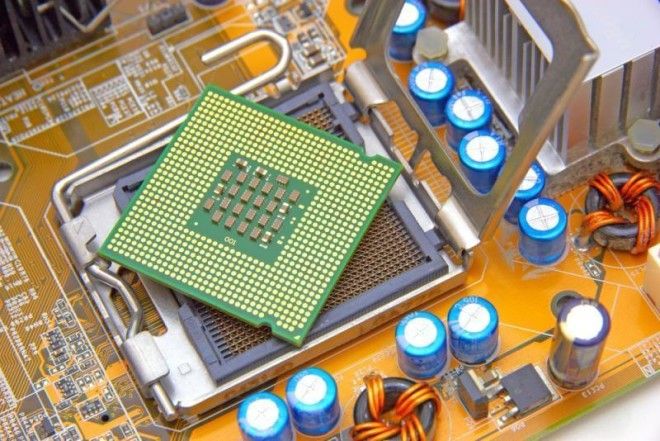
The discovery of wheel is estimated to be over 6000 years ago (around mid-4th millennium BC). More than the wheel itself, the sheer genius of this invention lies in the concept of the wheel-axel system. For something that may not be very technologically advanced (especially compared to today), the wheel is certainly one of mankind’s most amazing inventions and is still changing the way we live our lives. It’s interesting to see that even after such a long time since it was invented, we haven’t stopped our research to make it better. While it’s very clear that the wheel is used for transportation, its also indirectly enhanced man’s chances of survival by a great amount. The wheel made it easier for our nomadic ancestors to flee unlivable conditions like famine thus assuring our existence.
Compass

Before the invention of the compass, humans relied completely on the stars for direction. However, the spontaneity of the nature deems this practice unreliable at best, especially to use every day. The Chinese had been using the compass since the 4th century BC, but they actually used it for divinatory purposes (to understand and cope with life events). The first time it was used for navigation was in mid-10th century AD. Lodestone was and still is the magnet used in compasses; it is derived from the mineral magnetite and has a permanent alignment to the earth’s magnetic ends. Only 2 minerals in nature exist as naturally magnetized; the other is pyrrhotite however weaker in comparison.
Printing Press

The first movable-type printer was invented by Bi Sheng in China but Johannes Gutenberg revolutionized it by finding a way to cast the type; it is based on permanent matrixes that helped cast the letters. The unique system allowed for increased precision in printing and saved huge amounts of time – there were approximately 290 different letter boxes in the mold which helped make the different characters, punctuation marks etc. Another unique feature in his design was the use of oil based ink instead of water; oil holds to paper better. Because written documenters were easier and cheaper to attain after the creation of the printing press, the opportunity for education though reading spread quickly throughout Europe. This was especially instrumental for lower classes as activities like reading were only reserved for the elites of the society because of the costs of books. The first book printed on the Gutenberg Press was the Holy Bible. Of course, some credit must also be given to the invention of paper as well; without it, we would still be publishing on metal or stone tablets.
Penicillin

Until the discovery of Penicillin, people suffered death through ordinary accidents or illnesses like cuts, fevers, and bacterial infections. Penicillin was discovered in 1928 by Alexander Fleming. Flemming developed his idea from the concept of using mold to kill bacteria which has been used for ages. Ancient Egyptians were known to apply moldy bread on wounds to make them heal faster and protect surrounding areas from infection. Fleming applied a similar concept to his research –he isolated the actual (active) substance in the mold which allowed him to create a more concentrated dose. His contribution to the world has played a great role in extending our life-spans.
The Light Bulb

World would be one dark place without the invention of the light bulb. Invented by Thomas Edison and his team of scientists in 1879; it should be mentioned that his invention was one of a commercial practicality rather than those that were designed as early as 1802 (by Humphry Davy). Although credit should go to the light bulb, it should also be shared with devices that allow us to produce and harness the electricity needed to utilize these bulbs.
Steam Engine

The discovery of the steam engine is credited to James Watt; although this was not the first steam engine to ever exist, his design was the most practical and allowed for a continuous rotatory motion. This invention played a huge role in the success seen during the industrial revolution allowing for significant amount of growth to take place in both productivity and technology. It was also added to locomotives or trains which helped to decrease travel times. Eventually, advancements in engineering would allow for better ways to utilize this technology however the principal behind it remains the same; burning fuel to create kinetic energy.
Telephone

If there is one device in history that significantly reduced the size of our world, than it is the telephone. Not only did the frequency of communication reach a new high, the telephone is also responsible for the development of the transmitter which eventually turned into the radio. The first practical telephone was invented by Alexander Graham Bell in 1876; however the credit for the idea (and its initial prototypes) is shared by Alexander Bell and Antonio Meucci.
Microprocessor

While the invention of the computer had a huge impact on humanity, for most people, it did not affect their daily life until the creation of the microprocessor. Before its invention, computers used to take up huge spaces which made them unrealistic for personal purposes. The first microprocessor was developed in 1971 by Intel. Since it shrank the size of the computer, it revolutionized portability and enabled people to have them in their homes and eventually take them anywhere! Some of the most amazing contemporary technology we have surrounded ourselves with (from something as small as a cell phone to astounding supercomputers) is possible directly through this invention. The rest, as they say, is history.
Camera

The concept for the camera is one that is dated from around the 5th century BC. However, the first actual (and semi-decent) photo was not taken until 1816. The camera has certainly been an influential object in human society considering images control a significant portion of how we perceive the past and the “truth”. Just think how many moments in human history over the last 198 years have been captured on film and changed the way our society perceived an event? Since its creation, cameras have evolved drastically and have certainly increased their performance. Just imagine how overwhelmed Nicéphore Niépce (the person who took the first photo) would feel if he discovers Instagram.
The Internet

Over the evolution of humanity, we have constantly tried to find ways to make our world smaller—the wheel, the compass, the computer, the telephone. But, the biggest leap for mankind comes to us in the form of the internet. The internet was created with intentions of allowing smaller networks to connect into one larger one; which made it a great application for universities. The internet we know today (the World Wide Web) wasn’t created until 1989 by Tim Berners-Lee and hadn’t reached mainstream popularity till 1996. Today, no matter where you are on the planet, you have the information of our entire known universe in the palm of your hands because of this invention.

